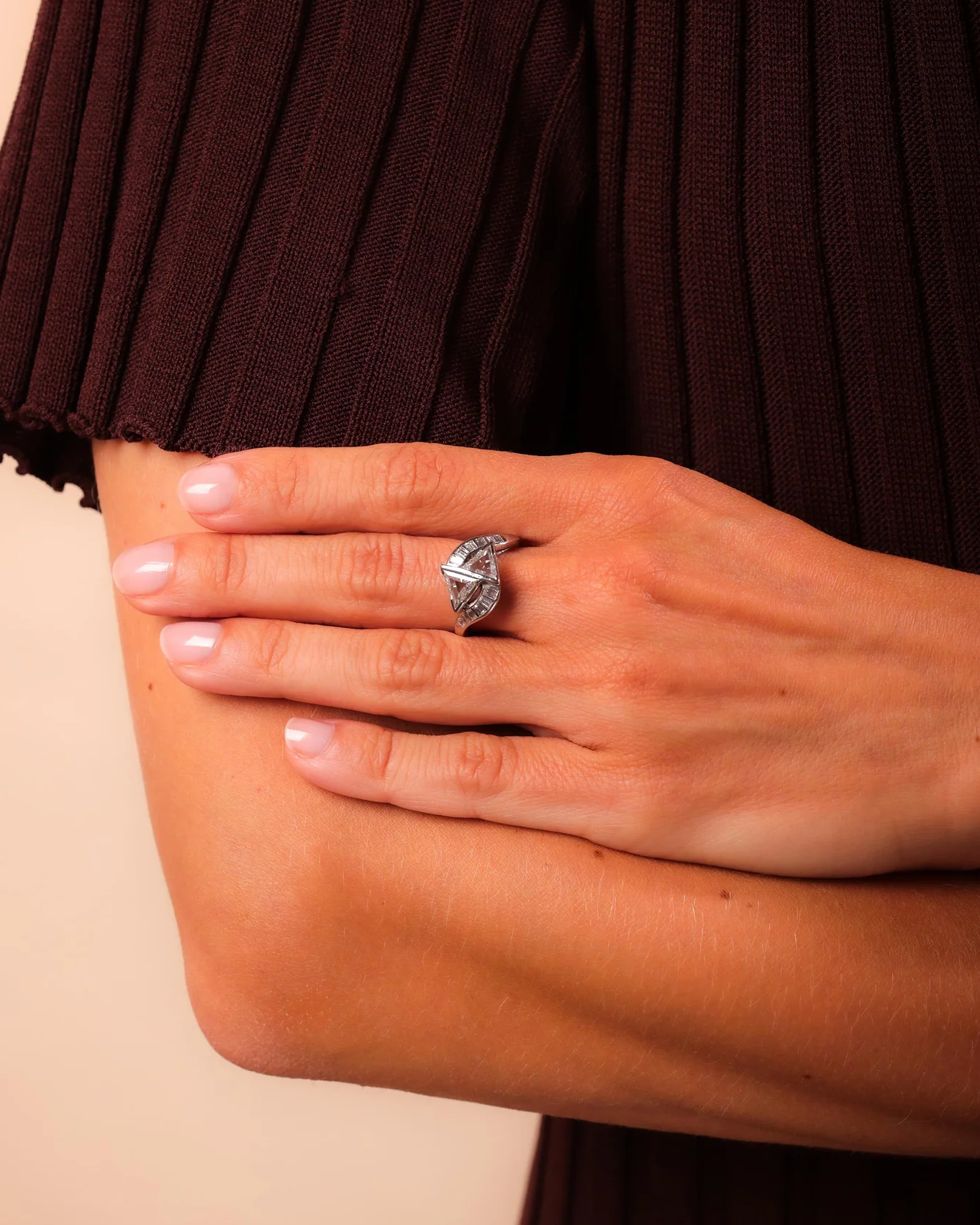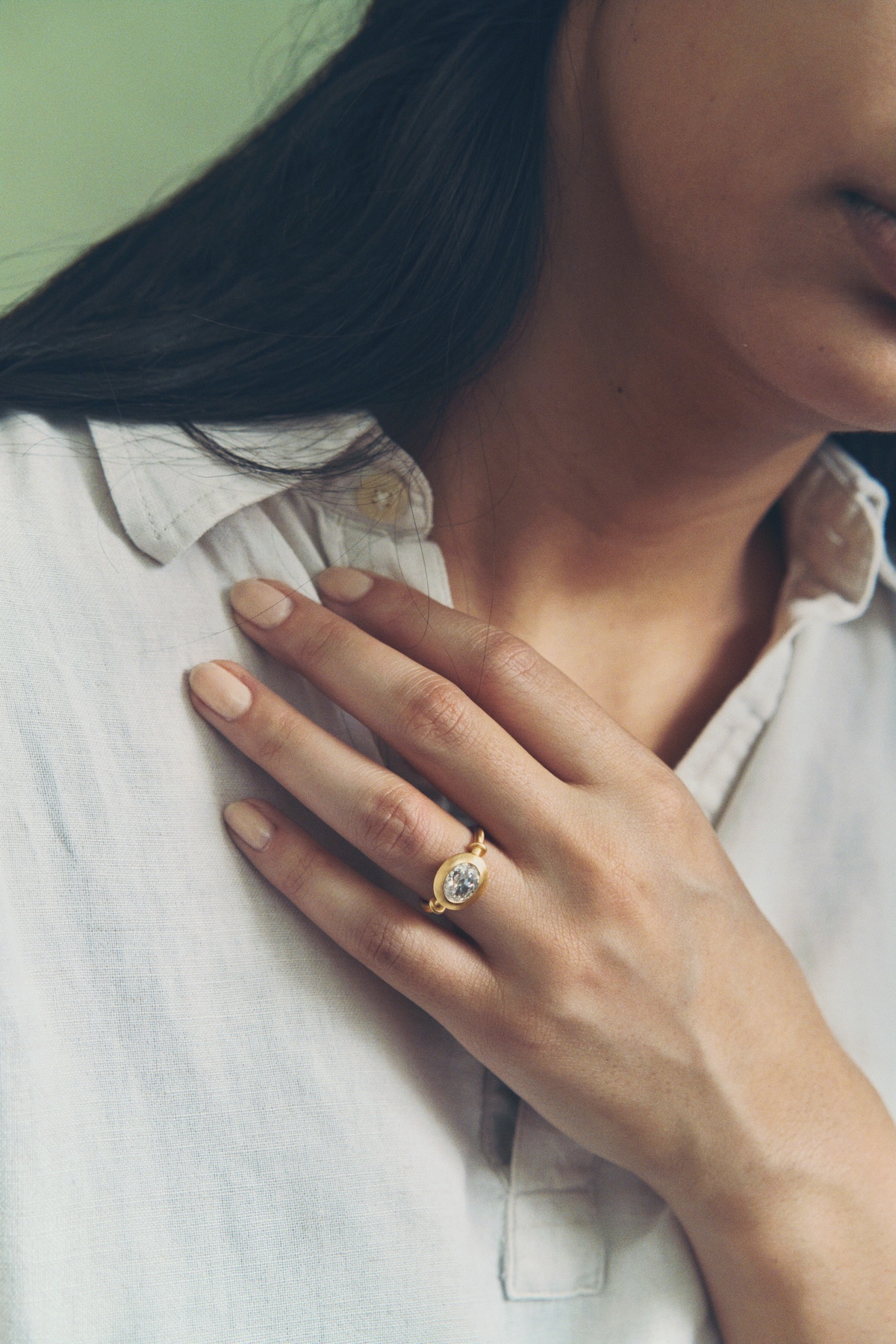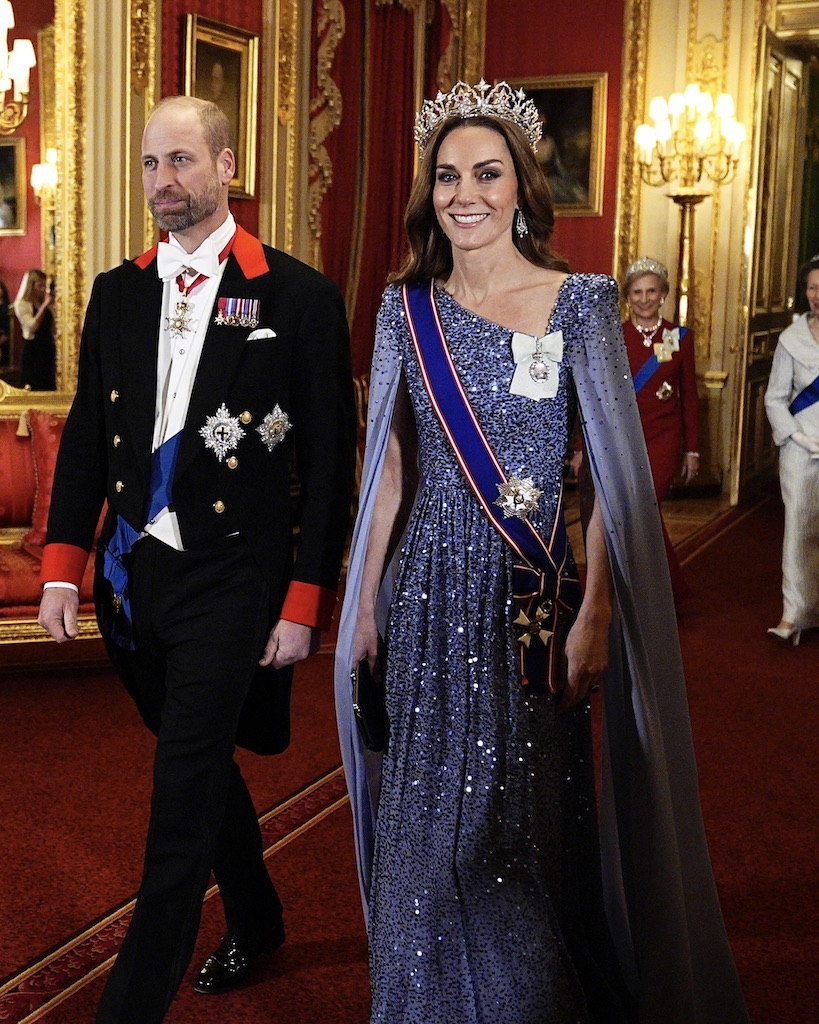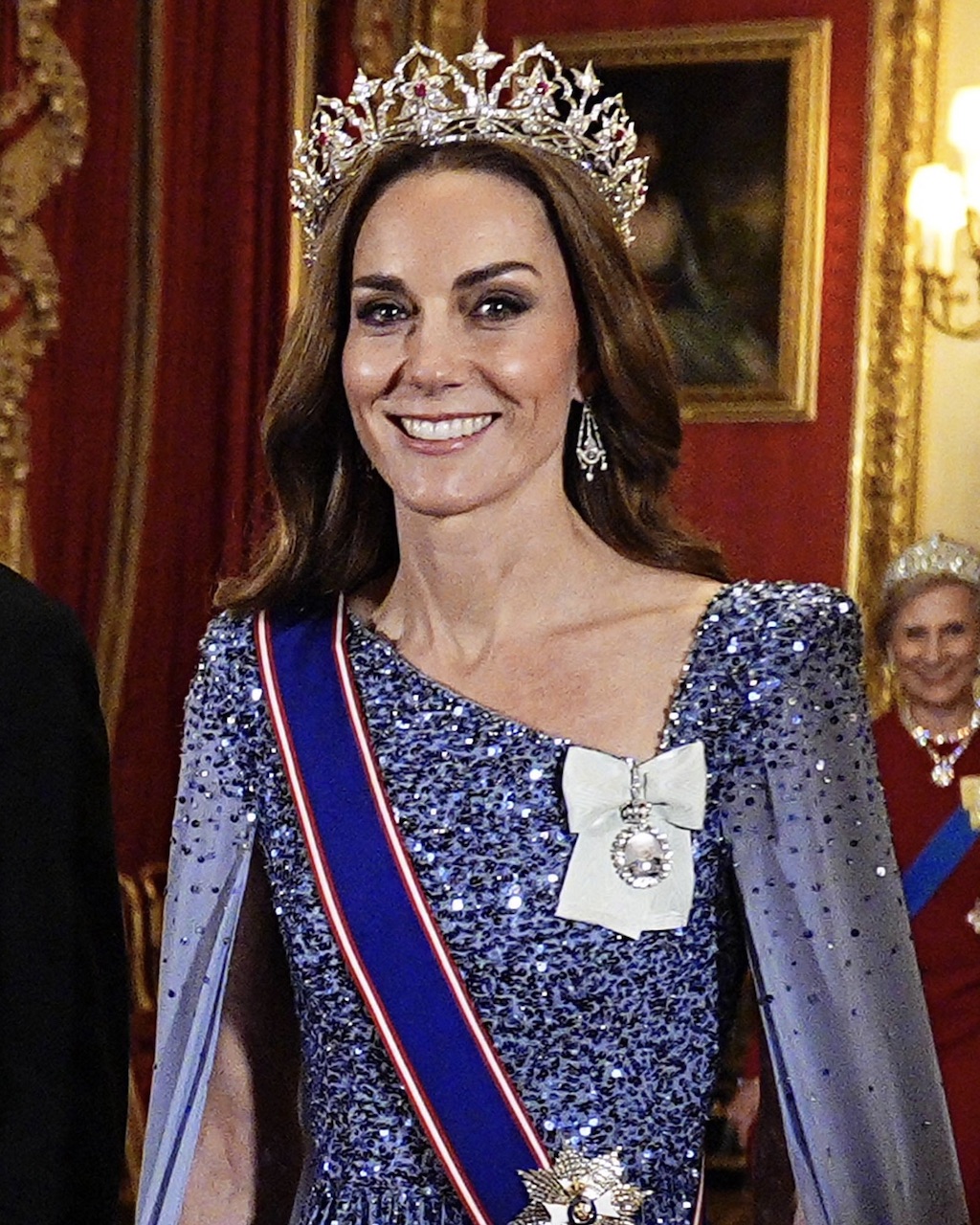Your Top Diamond Questions, Answered
Your complete guide—from origins and authenticity to care,
symbolism, and modern sustainability.
Published: November 11, 2025
Written by: Meredith Lepore
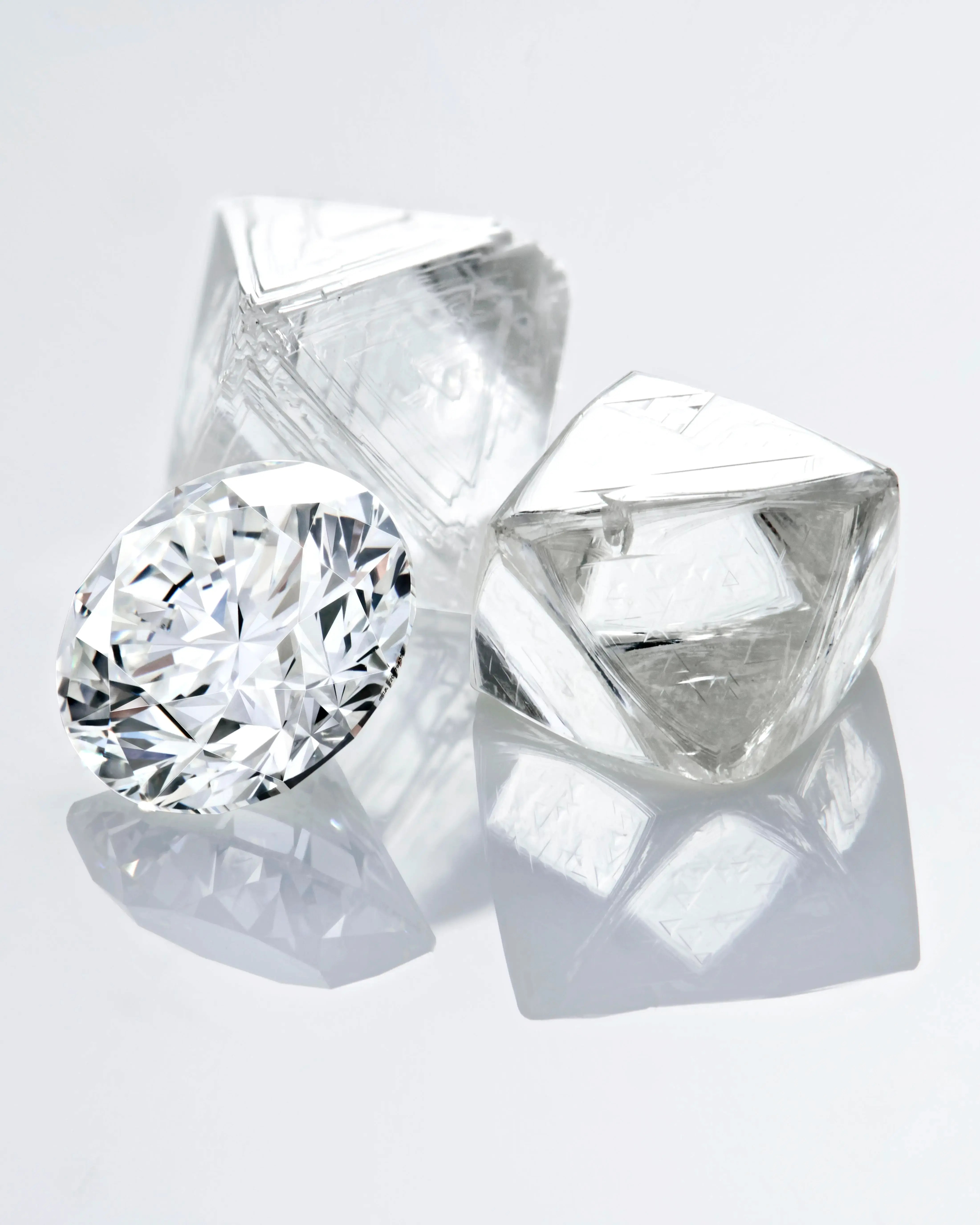
When it comes to natural diamonds, there are countless questions—about how they’re formed, where they come from, how they differ from lab-grown diamonds, and what truly determines their value.
Whether you’re shopping for an engagement ring, researching investment-grade diamonds, or simply fascinated by Earth’s most fascinating gemstones, it’s easy to get lost in myths and marketing buzzwords.
This guide answers every question you have about natural diamonds, from their origins deep within the Earth to how they’re graded, priced, and passed down through generations.
Meet the Experts

Annie Gateva is a Diamond & Gemstone Expert at Taylor & Hart. She is also an Award-winning London-based jeweler specializing in bespoke engagement rings.

Chagit Leviev is the President and CEO of Leviev Group USA. She is a seasoned diamond and gemstone expert whose career spans over two decades in the fine jewelry industry.

Alexandra Beth, Founder of Alexandra Beth Fine Jewelry, a New York-based company specializing in custom engagement rings and other fine jewelry.
Origins and Formation of Natural Diamonds

Natural diamonds are among the oldest substances on Earth—older than life itself. Understanding where they come from and how they form reveals why they remain one of nature’s most extraordinary creations.
Natural Diamond Council launched a series of reports on trends, origins, and other particularities of the ultimate gemstone – natural diamonds. Created in collaboration with governments, communities, and experts, these reports empower consumers, media, and industry professionals with transparent insights and engaging facts.
What exactly is a natural diamond?
A natural diamond is a rare and finite mineral formed by nature, consisting of a crystalline structure of carbon atoms. Known for being the hardest naturally occurring substance on Earth, natural diamonds are celebrated for their incredible durability, brilliance, and exceptional rarity.
How are natural diamonds formed?
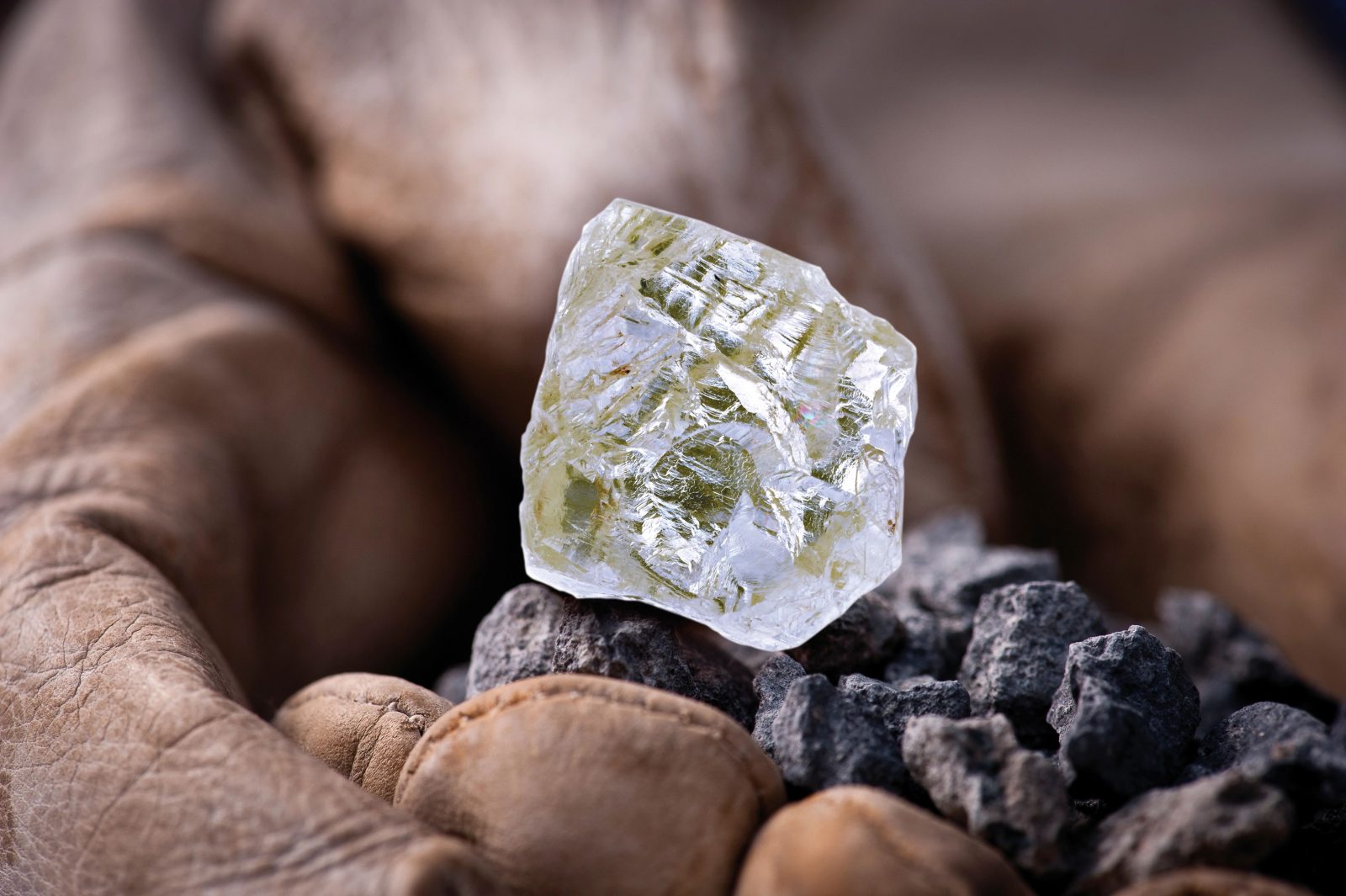
A natural diamond refers specifically to a gemstone formed deep within the Earth over billions of years through extremely high temperature, high pressure, and the perfect alignment of materials. They formed 90–150 miles below the Earth’s surface and are brought closer to ground level by ancient volcanic eruptions.
How old are most natural diamonds?
Most natural diamonds range in age from one to three billion years, with the oldest being dated over 3.5 billion years…long before life on Earth.
What are the differences between a natural diamond and a lab-grown diamond?
Natural diamonds are formed deep within the Earth over billions of years under extreme heat and pressure. Lab-grown diamonds are produced in a lab or factory with the use of high-pressure high-temperature (HPHT) or chemical vapor deposition (CVD) methods. Though both consist of a crystalline form of carbon, and share chemical properties. However, the quick growth process of lab-grown diamonds makes them easily identifiable from natural diamonds.
Where do natural diamonds come from?

The majority of natural diamonds are discovered in large-scale mining operations in Botswana, Canada, South Africa, Siberia, and Australia.
Are natural diamonds rare?
Yes, gem-quality natural diamonds are among the rarest natural substances on Earth. Their scarcity is a result of the very precise geological conditions required for their formation and the limited number of diamond-bearing deposits on Earth. Large, high-quality natural diamonds and natural color diamonds are especially rare. In fact, all the diamonds ever polished in history would fill just one double-decker bus.
Are natural diamonds still forming today?
The extreme geological conditions that produced natural diamonds 1 to 3.5 billion years ago no longer exist on the planet Earth, and the type of volcanoes that brought diamonds close to Earth’s surface no longer occur.
The Value & Authenticity of Natural Diamonds
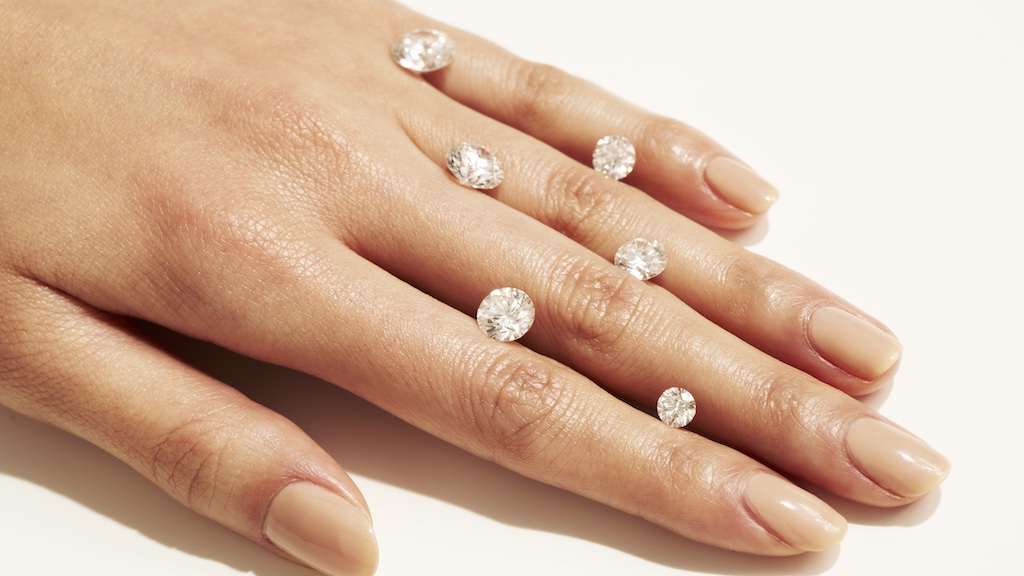
From their billion-year journey to their status as symbols of love and legacy, natural diamonds hold enduring value. But what influences their price—and how do you verify authenticity?
Chagit Leviev, President and CEO of Leviev Group USA, gave Only Natural Diamonds her insights, below.
Why are natural diamonds more valuable than lab-grown diamonds?
According to Leviev, authenticity has a value that can’t be replicated. Natural diamonds are a rare natural resource born deep within the earth over a long period of time, each one a special creation of nature. Their beauty isn’t just in how they look, but in what they represent: rarity, endurance, and a genuine origin.
True collectors and connoisseurs seek what’s real and natural, not fast, man-made stones. While the fast-growing trend of man-made diamonds certainly has its place, nothing can replace the timeless allure, emotional depth, and authenticity of a natural diamond.
How can I tell if a diamond is natural?
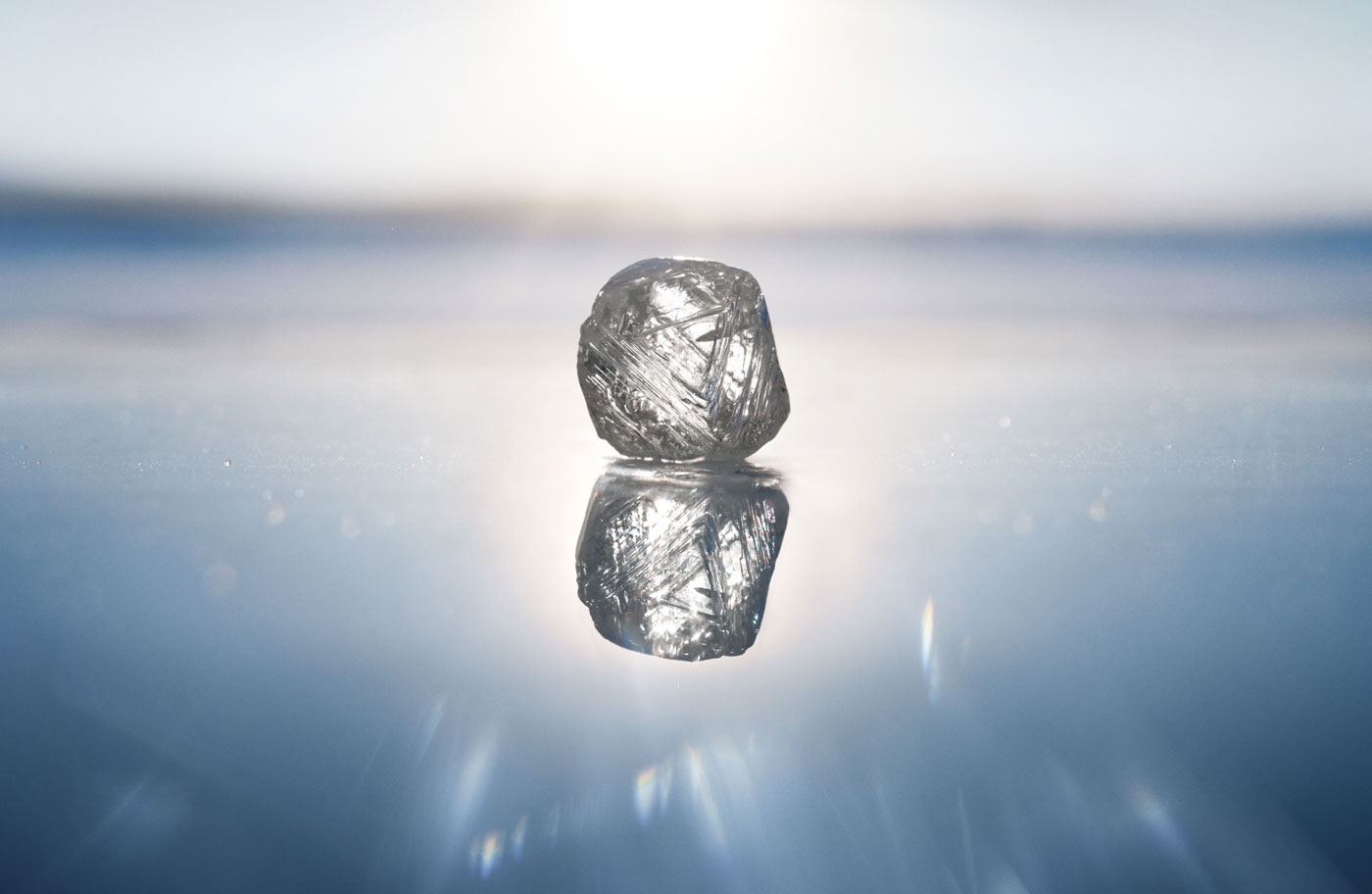
Every diamond over approximately one carat should be purchased with a GIA grading report. It’s important to buy from an authentic and trusted retailer. Reputable reports clearly state whether a diamond is natural or lab-grown, and testing also confirms that. When in doubt, most retail jewelers can test your diamond even if it wasn’t purchased from them.
What are the 4Cs of a natural diamond?
The 4Cs of natural diamonds are: Cut, Color, Clarity, and Carat weight. Based on these four parameters, you can determine the specifications of the diamond you want to purchase, said Leviev.
Which of the 4Cs matters most for brilliance and sparkle?
Leviev notes that this is a subjective question, as everyone has their own opinion! She’d have to say Cut (in her opinion). A masterful cut unlocks a natural diamond’s inner light, fire, and scintillation.
How can I verify the origin or traceability of a natural diamond?
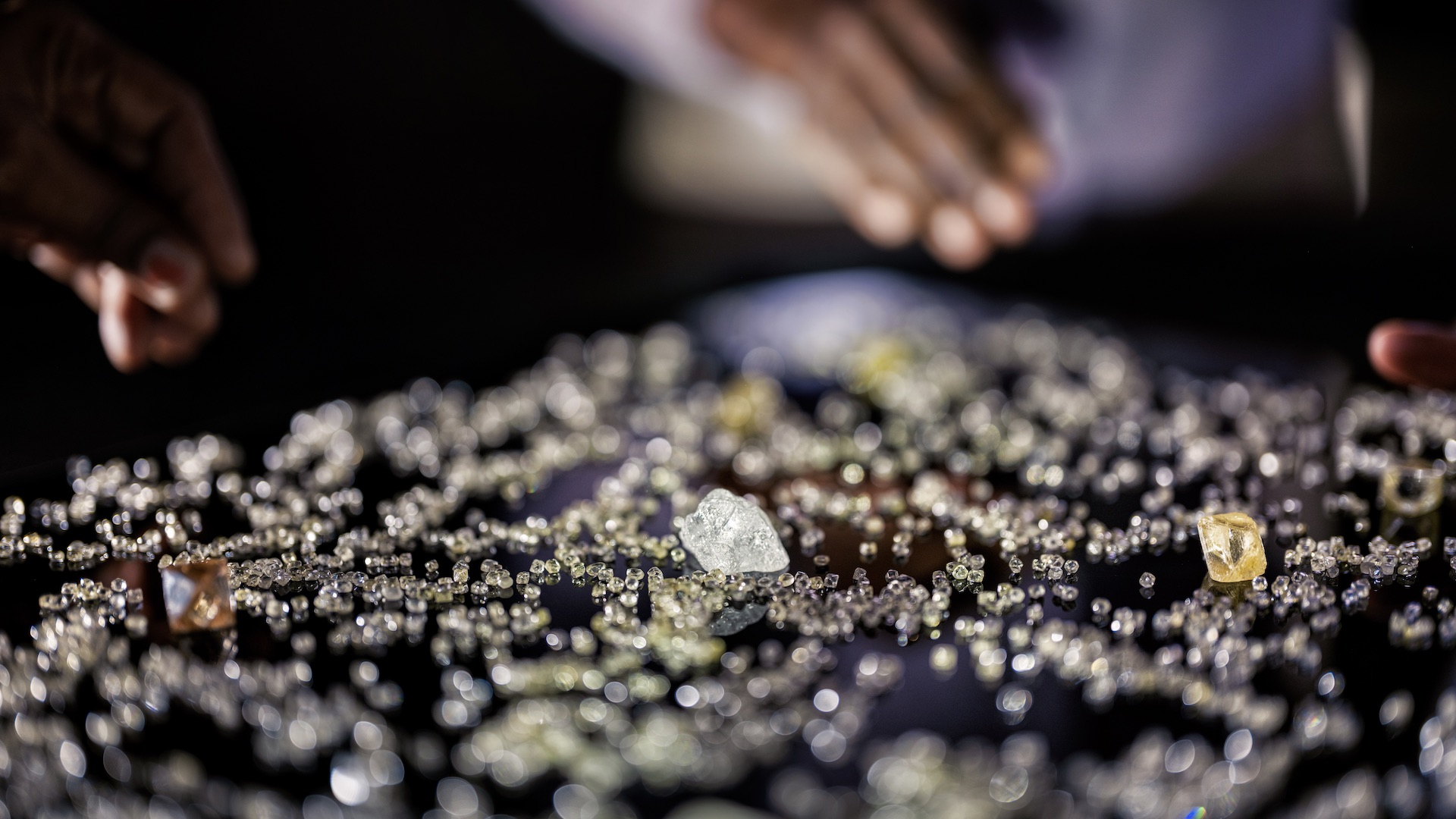
In the broader diamond marketplace, it’s recommended that shoppers request documentation of the supply chain and any laser inscription tied to the diamond’s grading report. Collaborating with a trusted jeweler who can provide transparent, mine-to-market details is crucial, according to Leviev.
Do natural diamonds hold their value over time?
NDC research finds that when diamonds are purchased correctly from a trusted jeweler and at a fair market value, natural diamonds tend to hold their value over time. Reports show that decades of price data show natural diamonds appreciate by approximately 3% to 4% annually.
Leviev said that while market trends may fluctuate, most of the time, natural diamonds have held their value thanks to their rarity, individuality, and enduring global demand. Diamonds have always been considered mobile assets — tangible, tradable, and universally recognized for their worth — ensuring they’ll always have a place in the market.
Naturally, the rarer the diamond, the stronger its long-term potential. Leviev notes that this is seen most clearly with colored diamonds: over the years, their prices have absolutely skyrocketed, reflecting the growing appreciation for truly unique and irreplaceable gems.
What’s the difference between diamond cut and diamond shape?

Shape refers to the outer form or style of the diamond, such as round, oval, pear, marquise, princess, and other rarer cuts like kite, heart, shield, etc.
Leviev says cut can refer to the shape but also to the quality and distribution of the diamond’s surface facets, proportion, and polished finish. It takes an expert eye to “unlock” the most unique aspects within the diamond rough, working to maximize its inner light or sparkle, reflect the best color, and minimize any natural inclusions to enhance the diamond’s greatest beauty and valuation.
What are natural fancy-colored diamonds, and why are they so rare?
Fancy colored natural diamonds are gems whose body color, like pink, blue, or yellow, occurs naturally due to trace elements or unique crystal structures. Because those conditions are exceptionally uncommon, true fancy colors are extraordinarily rare and therefore, typically command higher prices. In fact, fewer than 0.01% of all natural diamonds display enough color to be classified as fancy.
Ethics, Responsibility & Sustainability

Today’s diamond industry is more transparent than ever, with international standards and responsible sourcing shaping the future of natural diamonds.
Are natural diamonds ethically sourced today?
Today, the diamond industry operates with the highest level in history on integrity and accountability when it comes to ethical sourcing of diamonds. When you buy from trusted jewelers who prioritize transparency, there will be more confidence about your diamond’s origins. In 2025, the majority of natural diamonds now originate from major publicly traded or government-regulated companies that adhere to strict ethical, social, and environmental standards.
What is the Kimberley Process, and how does it protect consumers?
The Kimberley Process is a global certification system designed to keep conflict diamonds from entering the market by mandating government-approved documentation at every touch point of export and import.
Leviev Group USA played a pioneering role in the creation of this initiative and continues to uphold its principles through a rigorous, transparent approach to sourcing and quality assurance—tracing each natural diamond from its origin to the finished jewel.
According to NDC research, over 99.9% of natural diamonds today are verified as conflict-free under the Kimberley Process.
How can I ensure my natural diamond is conflict-free?
To ensure your natural diamond is conflict-free, you have to buy from a trusted and reputable jeweler that will be transparent about a diamond’s origin, follow responsible supply-chain practices, and provide written assurances or certifications so you can feel confident in your purchase.
How do natural diamond mines support local communities?

The Natural Diamond Council reports that responsible diamond mining generates long-term value for surrounding communities. It promotes skilled employment, access to education and healthcare, prioritizes local sourcing, and helps drive infrastructure. The positive impact of natural diamond mining lasts long after a mine closes, helping communities for generations to come. For example, in Botswana, the world’s top producer of natural diamonds, the industry accounts for about 40% of the nation’s GDP. Revenue from diamonds helps provide free education and has made Botswana the country with the highest GDP per capita on the African continent.
What steps is the industry taking to make natural diamond mining more sustainable?
The industry is taking active steps to improve natural diamond processes in the biodiversity, emissions, and water recycling categories. Now, 83% of all water usage in all natural diamond mining is recycled, and the industry protects more than four times the amount of land it uses.
Why have natural diamonds remained symbols of love, strength, and commitment for centuries?
Leviev says natural diamonds are rare, enduring, and brilliant, just like the moments and relationships they mark. A natural diamond feels personal; it becomes a reflection of you. This makes natural diamonds the unconditional choice over any other options.
What are traceable or “mine-to-market” diamonds, and how do they work?”

Traceable or “mine-to-market” diamonds are diamonds that come with verified documentation showing their journey from the exact mine where they were sourced all the way to the consumer.
Care, Maintenance, and Longevity of Natural Diamonds
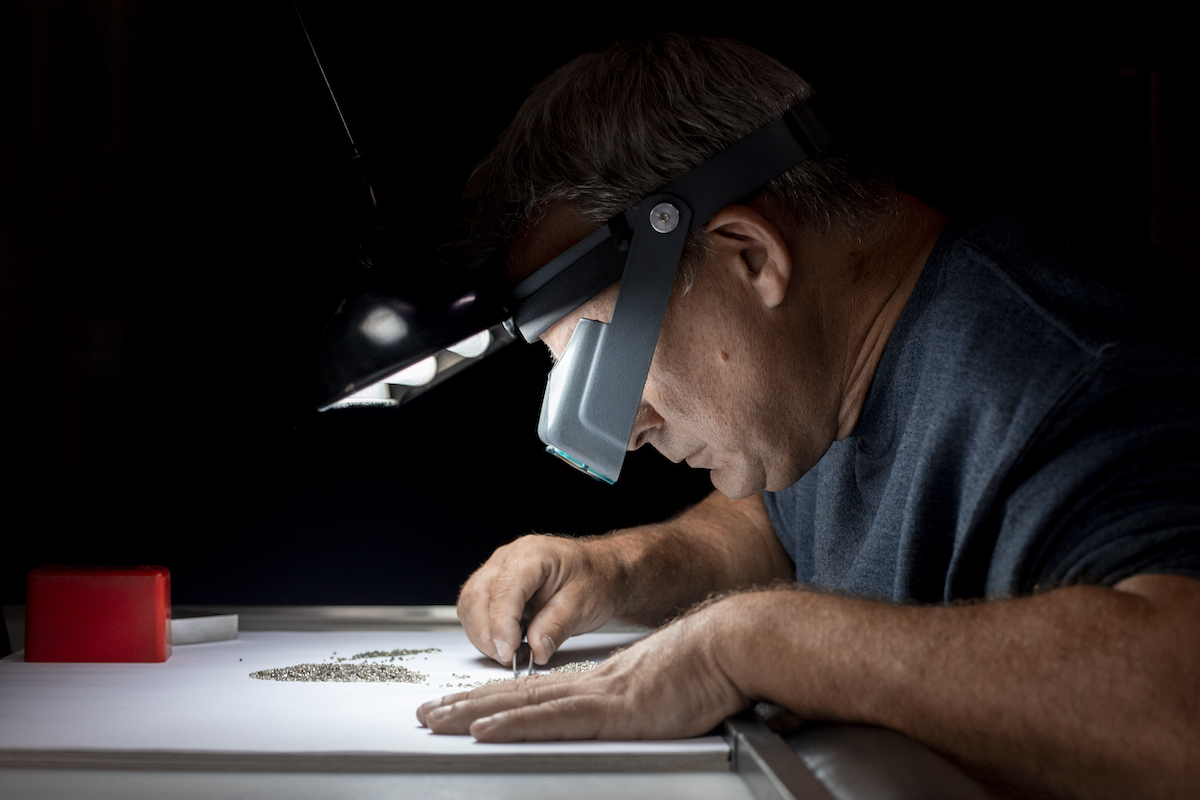
Diamonds last forever—but like any meaningful piece, they need proper care to maintain their brilliance and security.
Annie Gateva, a Diamond & Gemstone Expert at Taylor & Hart, and Alexandra Beth, founder of Alexandra Beth Fine Jewelry, gave Only Natural Diamonds their insights below.
How should I clean and care for natural diamond jewelry?
According to Gateva, cleaning your engagement ring once a month makes a huge impact on your diamond’s sparkle and is easy to maintain and clean your diamond jewelry from home.
Here is a breakdown of the best way to gently cleanse your diamond jewelry and have it sparkling like new in just a few minutes.
- Use a small drop of dish soap and warm water to gently scrub your jewelry with a soft
toothbrush. - Rinse with warm water to remove any residue.
- Pat dry with a soft cloth or microfiber towel.
Can natural diamonds ever chip or lose their sparkle?
Sadly, diamonds aren’t indestructible–they can be chipped or scratched if they’re knocked or caught in the right way, especially since our hands are constantly in motion throughout the day. Even though this is possible, it’s not very common.
Gateva notes that despite this, a diamond can’t truly ‘lose’ its sparkle. If it appears dull, it usually just needs a good clean, as everyday products like moisturizers, hand soap, and other residues can build up and cloud its brilliance.
How often should I have my natural diamond ring checked?
Have your natural diamond ring cleaned and inspected every year or if it undergoes any potential damage. Inspections may help prevent the loss of any stones by ensuring they are properly secured, and they can extend the life of your jewelry.
Should I insure my natural diamond engagement ring?

For peace of mind, it’s important to arrange insurance to protect your diamond against loss, damage, or theft. Proper coverage offers peace of mind, ensuring that one of your most meaningful possessions is safeguarded through every milestone, from the proposal and wedding to anniversaries and beyond. With comprehensive insurance in place, you can wear and enjoy your diamond with confidence, knowing it’s protected for a lifetime.
Why do people choose natural diamonds for fine jewelry?
People choose natural diamonds for their timeless beauty and the way each one carries a story that can be cherished for generations.
What types of jewelry best showcase natural diamonds?

Natural diamonds shine brightest in designs that highlight their brilliance and timeless appeal. Classic pieces such as tennis bracelets, diamond studs, solitaire rings, pendants, and tennis necklaces are ideal for showcasing a diamond’s unmatched sparkle and versatility. That said, natural diamonds have the power to elevate any piece of jewelry—from bold cocktail rings and statement earrings to intricate timepieces and brooches—adding instant sophistication, value, and meaning to every design.
What makes natural diamond earrings a timeless investment?
Natural diamonds elevate any look, can be worn every day or on special occasions, and they never go out of style!
What are the must-have natural diamond jewelry pieces for every collection?
Diamond essentials are the timeless pieces every collection should include. Think: a tennis bracelet, diamond studs, a tennis necklace, and a simple diamond pendant. These enduring designs transcend trends and generations, effortlessly elevating everything from casual denim to evening gowns. They’re the pieces you’ll reach for every day and pass down one day—true heirlooms that never lose their beauty, versatility, or meaning.
How do natural diamonds compare to other gemstones?
Natural diamonds stand apart for their extraordinary brilliance, unmatched durability, and timeless significance, making them a jewel to be cherished for generations.
What are the best settings for a natural diamond engagement ring?

According to Beth, a natural diamond engagement ring setting should be a balance between using minimal metal to show off the sparkle of the diamond and adequate structural components to ensure the stone is secure.
When it comes to metal color- yellow, white, rose, or two-tone- there’s no wrong choice; it’s entirely up to the couple, she adds.
Are sustainable natural diamond engagement rings available?
Yes. Sustainable natural diamond engagement rings are absolutely available. Most natural diamonds on the market today are ethically sourced, with strict standards in place to ensure fair labor practices and community benefit in producing countries. The industry continues to advance these efforts, striving for even greater environmental protection and long-term sustainability goals.
Should my wedding band match my natural diamond engagement ring?

Whether your wedding band should match your natural diamond engagement ring is completely a matter of personal style. Some prefer a coordinated look, pairing a diamond band in the same metal and design for a harmonious set. Others mix metals, shapes, or settings to create a more modern, individualized stack. You can also opt for a statement band and wear the rings on separate fingers, or even wear a diamond band alone in place of a traditional engagement ring. The beauty of natural diamonds is that they shine in any combination.
Can natural diamonds be reset or repurposed for new engagement rings?
Yes. Natural diamonds can absolutely be reset or repurposed into new engagement rings. Their durability and timelessness make them ideal for redesigns—whether transforming an heirloom stone into a modern setting or creating a new ring that reflects your evolving style.
Why do people choose natural diamonds for fine jewelry?
People choose natural diamonds for fine jewelry because they represent rarity, authenticity, and enduring beauty. Formed deep within the Earth over billions of years, each natural diamond is completely unique—a one-of-a-kind creation of nature. Beyond their brilliance, natural diamonds carry emotional and lasting value, often becoming treasured heirlooms passed down through generations.



